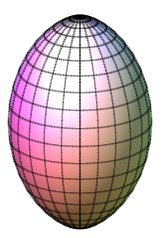
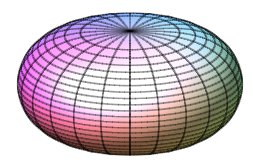
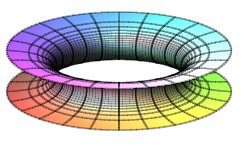
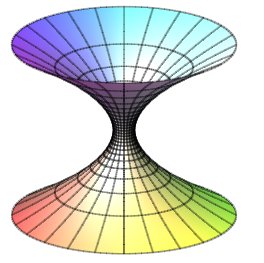
| surface suivante | surface précédente | courbes 2D | courbes 3D | surfaces | fractals | polyèdres |
ROTATION SURFACE WITH PROPORTIONAL CURVATURES
 |
 |
 |
 |
|
|
|
|
|
| Surface studied by Wolfgang Kühnel in 1999 (Differential Geometry, p. 95) |
Cylindrical parametrization: 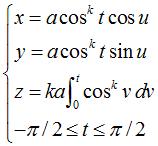 . .
Differential equation: Parallel and meridian radius of curvature: |
It's about the rotation surface for wich both principal radius of curvature (or both prinipal curvatures, or again mean curvature and total curvature) are proportionnal at each point - see the notations.
The meridian radius of curvature of a rotation surface
being
that of the profile of this surface, and the parallel
radius of curvature joining the point M of the surface at the point
of intersection of the normal with the axis, the profiles of
the surfaces studied here are only curves whose radius
of
curvature is proportional to the normal (or such that
the quotient MI / MN is constant where I is the center of curvature),
in other words, the curves
of Ribaucour.
| Various cuts by a plane passing through the axis ;
for k = 1 we get the circle, for k = 2 the cycloid, for k =1/ 2 the right lintearia, for k = –1 the catenary., and for k = – 2 the parabola (of directrix Oz). |
Half-surfaces with k = 2, k = 1 (sphere),
k
=
1/2, et k = 1/5. Note that the relation |
Half-surfaces with k = – 1/2 (Flamm's paraboloid) and k = –1 (catenoid). |
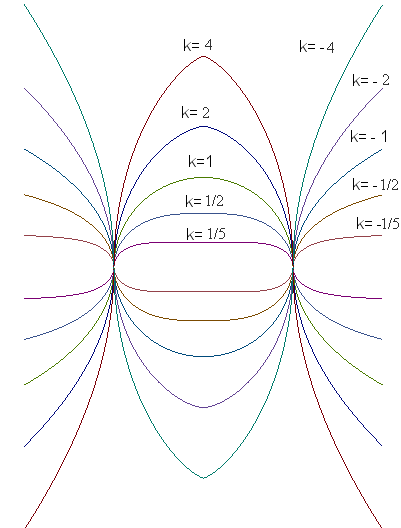 |
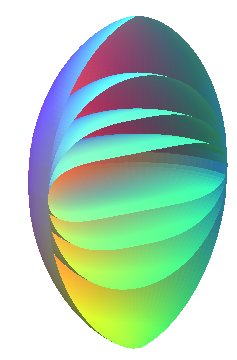 |
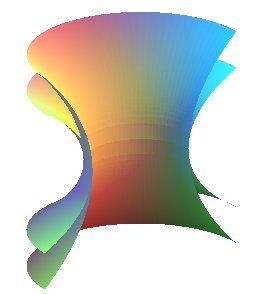 |
Compare with rotation
surfaces with constant gaussian curvature (that is, whose two
curvatures are inversely proportional).
| surface suivante | surface précédente | courbes 2D | courbes 3D | surfaces | fractals | polyèdres |
© Robert FERRÉOL 2019